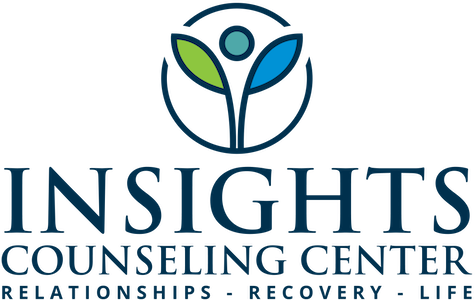Family Disclosure After Betrayal: Why It Matters and How to Do It Well
When families have been impacted by betrayal, addiction, or other relational harm, the ripple effects can reach far beyond the couple. Children, teens, and even adult children often sense that something is wrong—even when no one is saying it out loud. Without context, they’re left to fill in the blanks themselves, often with stories rooted in fear, confusion, or self-blame.
At Insights Counseling Center, we support clients through a process called Family Disclosure—a structured, compassionate approach to telling the truth in ways that promote healing, not harm.
The Purpose of Family Disclosure
The only purpose of family disclosure is to provide an authentic narrative to family members about a person’s behaviors. It is not a time for rationalization, defensiveness, or shame-filled overexposure. Rather, it’s a moment to acknowledge what has happened in a way that offers clarity—not confusion.
When children and family members are kept in the dark, they often sense something is off anyway. Disclosure allows the truth to replace ambiguity. It is a gift of emotional honesty—anchored in relational repair.
A Step in the Process of Healing
When the truth is shared with care, it becomes a step in healing—not just for the person disclosing, but for the entire family system. Each individual will have their own feelings, reactions, questions, and memories. Those emotional responses are not problems to be solved but parts of a meaning-making process.
Disclosure doesn’t offer closure. It offers congruence—the chance for each family member to better understand the story they’ve lived inside.
What We All Need to Heal
At the core of family disclosure is a deep respect for basic human needs: safety, belonging, and meaning. Using Maslow’s Hierarchy of Needs as a guide, we ask:
What helps you feel loved in your family?
What gives you a sense of connection and belonging?
What questions do you still carry?
When children are given answers instead of silence, they gain emotional security. When adult children are acknowledged instead of bypassed, they gain a sense of coherence. These moments restore a lost sense of safety.
What Needs to Be Named
A well-prepared family disclosure covers six key areas:
What values do I hold that I have violated?
What values did we hold as a couple that were broken?
What has the child witnessed or likely noticed?
What was the impact on the child and our relationship?
"I was often grumpy or withdrawn and not available to you in the way I want to be."
What does my child need to know about the cycle I was caught in—and the changes I’m making?
What will I do differently to live in alignment with my values?
Children often pick up far more than we realize—texts left open, overheard arguments, tension in the home. Naming these patterns (rather than pretending they didn’t happen) helps children trust their instincts again.
The 24-Hour Loop Back
One of the most important steps in the disclosure process is the loop back. Within 24 hours, each parent should check in with each child individually, saying something like:
“Just checking on you. If you have any questions, you can always ask me.”
This short conversation signals safety and availability. It also models emotional presence—something children often crave after a season of secrecy or confusion.
We also recommend incorporating 24-hour feedback, which lets the child know their voice matters. You might say:
“You can tell us or ask us anything, and we are going to listen and really try to hear your perspective without any fixing or defensiveness. We want to create safety for you to share anything you are feeling and ask any questions that you may have. We will then come back in 24–48 hours to give you a thoughtful response and continue the dialogue.”
This models patience, openness, and a willingness to engage in ongoing connection—not just a single conversation.
Parent Guidance and Preparation
Family disclosure should never be impulsive or reactive. It must be done with support and intention. We recommend:
Regulating your own nervous system beforehand
Dropping defensiveness and blame
Coordinating with your partner (if appropriate) to present a united message
Choosing a quiet, private, and unrushed setting
Planning around developmental needs:
Young kids: simple language and assurance of safety
School-aged kids: clarity about what this means for the family
Teens/young adults: honesty, responsibility, and room for big feelings
Adult children: context, acknowledgment, and an invitation to process
Timing matters. Family disclosure doesn’t have to happen immediately. The pacing should be shaped by the family’s needs and the support of your therapist. In early sessions, it’s important to ask your therapist how they approach family disclosures and what training they have in this area. A well-structured, developmentally informed plan is key to creating a therapeutic and safe foundation—for both you and your children—as you move through the impact of betrayal on the family system.
From Surviving to Creating Something New
Family disclosure isn’t about fixing the past. It’s about acknowledging what’s been broken—and naming the kind of relationship you want to build moving forward.
“The old ways didn’t work. Let’s explore the kind of relationship we want to have now.”
– Adapted from Corely & Alavarez
Final Thoughts
Family disclosure takes courage. It invites truth where there’s been confusion, presence where there’s been distance, and repair where there’s been pain. At Insights, we walk alongside families through this process—not to rush healing, but to honor it.
If you’re navigating a season of rebuilding trust, we’re here to support you. Truth-telling is hard—but it can also be the beginning of something more connected and whole.
Credit: This framework is adapted from the work of Jessica Eidens at Eidens Therapy.

